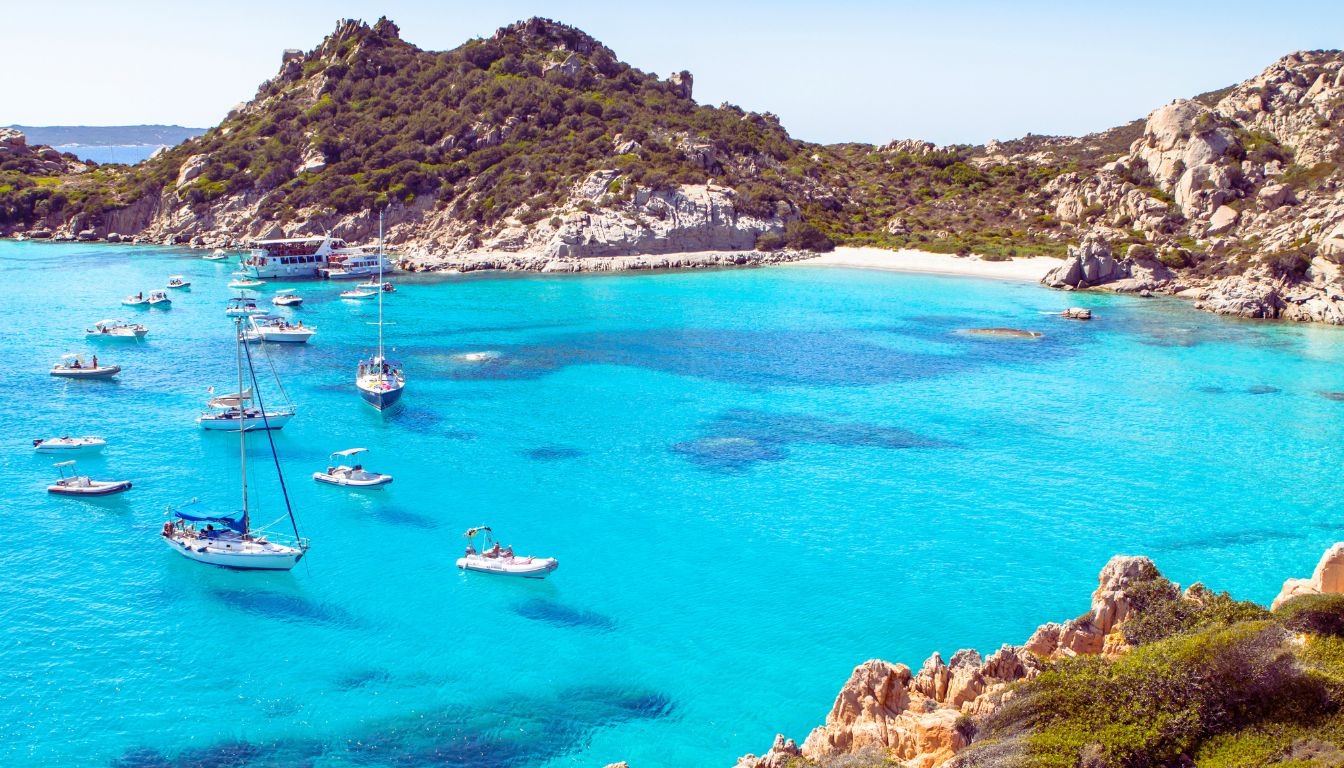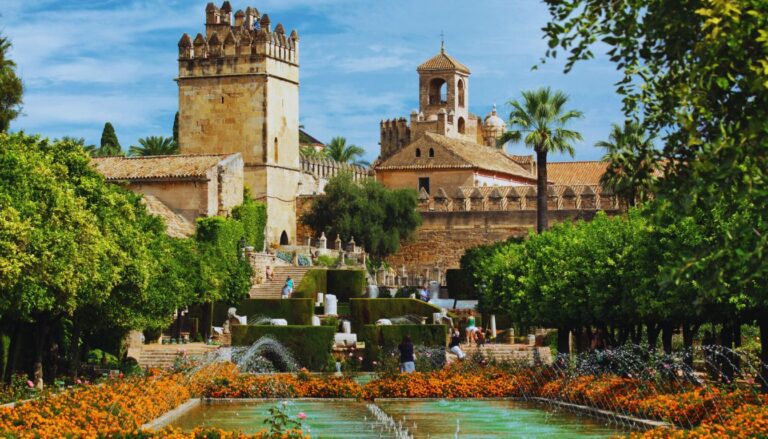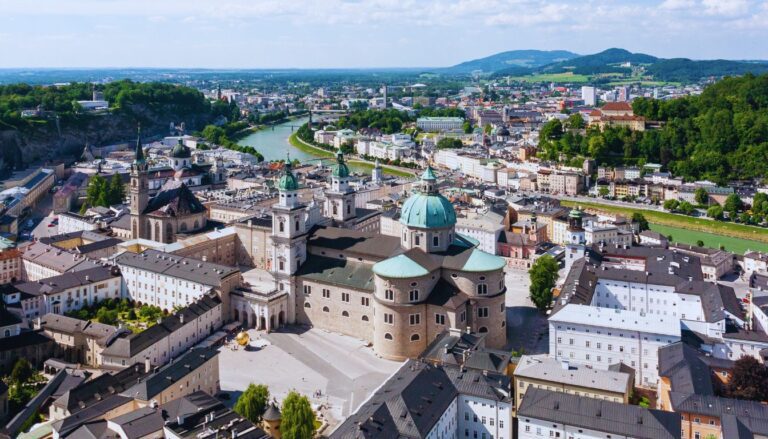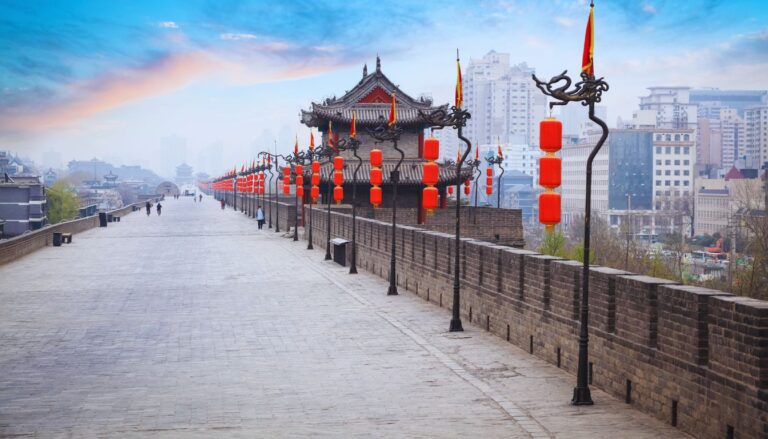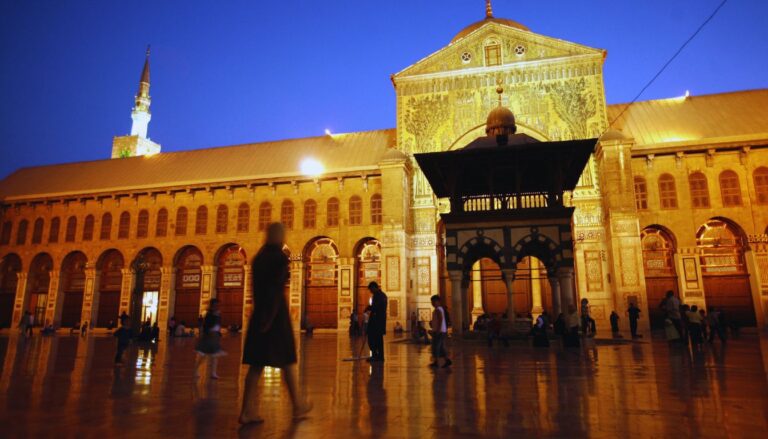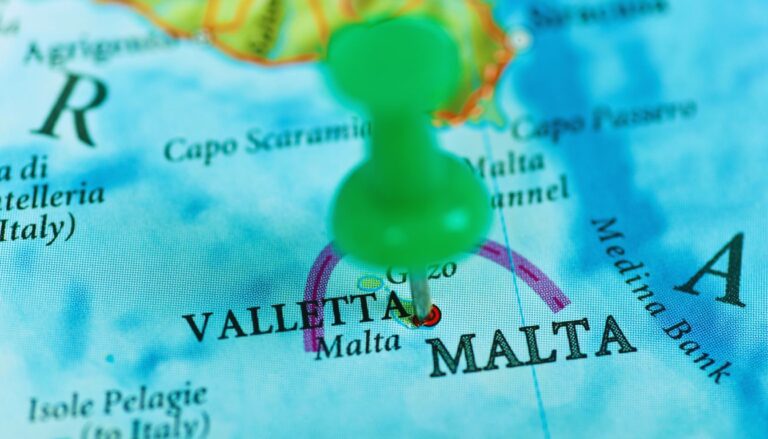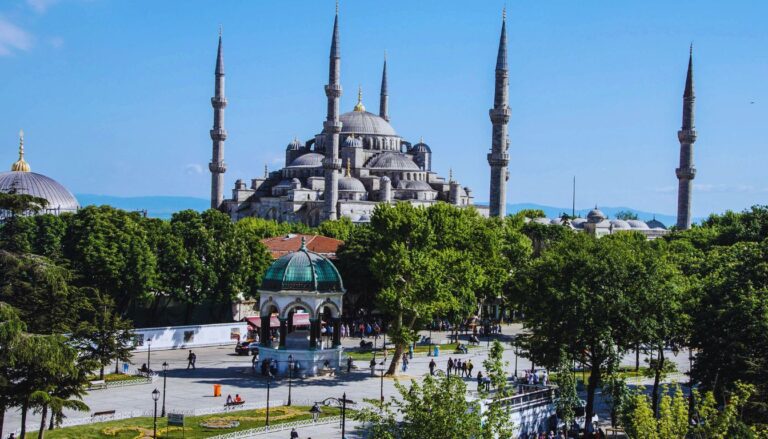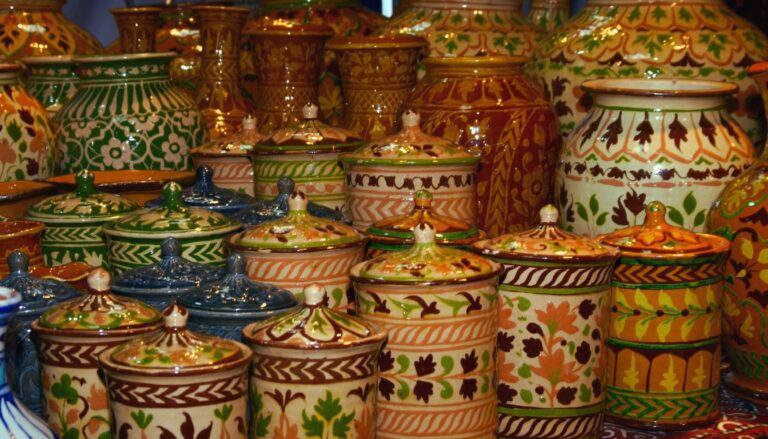Nestled in the heart of the Mediterranean, the Italian island of Sardinia is home to one of the world’s most fascinating longevity hotspots. This region, known as a “Blue Zone,” has captured the attention of researchers, health enthusiasts, and curious minds alike due to its unusually high concentration of centenarians – people who live to be 100 years or older.
Sardinia’s Blue Zone, particularly the Ogliastra region in the island’s mountainous interior, stands out as a place where people not only live longer but also enjoy healthier and more active lives well into their golden years. This phenomenon has sparked extensive research and global interest in understanding the secrets behind Sardinian longevity.
In this article, we’ll explore the various factors that contribute to the exceptional lifespan of Sardinians in the Blue Zone. From their traditional diet and active lifestyle to their strong family bonds and unique approach to stress management, we’ll uncover the multifaceted elements that may hold the key to living a longer, healthier life.
As we delve into the Sardinian longevity puzzle, we’ll not only learn about their way of life but also consider how these lessons might be applied in other parts of the world. The story of Sardinia’s centenarians is not just about adding years to life, but about adding life to years – a concept that resonates with people across cultures and continents.
Join us on this journey through Sardinia’s Blue Zone, where ancient traditions meet modern science in the quest for understanding the secrets of a long and fulfilling life.
Table of Contents
Understanding Blue Zones: What Makes Sardinia Special?
The concept of Blue Zones was introduced by Dan Buettner, a National Geographic fellow and author, who identified five regions in the world where people live significantly longer than average. These areas are:
- Okinawa, Japan
- Sardinia, Italy
- Nicoya, Costa Rica
- Ikaria, Greece
- Loma Linda, California, USA
Among these, Sardinia stands out for several reasons:
- Male Longevity: Sardinia is particularly notable for its high number of male centenarians, which is unusual as women typically outlive men in most populations.
- Mountainous Region: The Blue Zone in Sardinia is concentrated in the Ogliastra region, a mountainous area that has remained relatively isolated over the centuries.
- Genetic Factors: Some researchers believe that the Sardinian population may have genetic factors contributing to their longevity, possibly due to their relative isolation.
- Traditional Lifestyle: Many centenarians in Sardinia have maintained a traditional lifestyle, including diet and daily routines, which may contribute to their longevity.
Key Characteristics of Sardinia’s Blue Zone:
- Diet: A plant-based diet rich in local produce, whole grains.
- Physical Activity: Regular, low-intensity physical activity integrated into daily life, often related to shepherding or farming.
- Family and Social Bonds: Strong family ties and social connections within the community.
- Sense of Purpose: Many older adults in Sardinia continue to have a strong sense of purpose and remain active in their communities.
- Stress Reduction: A laid-back attitude towards life and time, often referred to as “island time.”
- Environmental Factors: Clean air, locally sourced food, and a connection to nature.
What Sets Sardinia Apart:
While all Blue Zones share certain characteristics, Sardinia’s unique combination of factors makes it especially interesting to researchers:
- Historical Isolation: Sardinia’s mountainous interior has remained relatively isolated, preserving traditional ways of life.
- Cultural Respect for Elders: Sardinian culture places high value on older adults, integrating them into family and community life.
- Gender Equity in Longevity: Unlike many places where women significantly outlive men, Sardinia sees more equal longevity between genders.
- Unique Food Items: Certain foods specific to the Sardinian diet, such as pecorino cheese from grass-fed sheep, are believed to have health benefits.
Understanding what makes Sardinia special among Blue Zones is crucial for grasping the full picture of longevity in this region. As we explore further, we’ll delve into each of these factors in more detail, uncovering the secrets that may contribute to the remarkable lifespan of Sardinians in the Blue Zone.
The Sardinian Diet: Eating for Longevity
The diet of Sardinia’s Blue Zone inhabitants is often cited as a key factor in their longevity. It’s a variation of the Mediterranean diet, but with some unique characteristics that may contribute to the exceptional health of Sardinian centenarians.
Key Components of the Sardinian Diet:
- Plant-Based Foundation:
- Vegetables: A wide variety of fresh, locally grown vegetables form the base of most meals.
- Fruits: Seasonal fruits are consumed regularly, often as desserts or snacks.
- Whole Grains: Barley, a grain rich in fiber and antioxidants, is a staple.
- Legumes:
- Beans, chickpeas, and lentils are consumed frequently, providing protein and fiber.
- Nuts:
- Almonds, walnuts, and hazelnuts are common snacks, offering healthy fats and proteins.
- Olive Oil:
- Used generously in cooking and as a condiment, providing healthy monounsaturated fats.
- Dairy:
- Pecorino cheese, made from the milk of grass-fed sheep, is high in omega-3 fatty acids.
- Goat’s milk is often consumed instead of cow’s milk.
- Meat:
- Meat is eaten sparingly, often only for Sunday meals or special occasions.
- When consumed, it’s typically lean meat from free-range animals.
- Fish:
- While more common in coastal areas, fish is part of the diet, providing omega-3 fatty acids.
Unique Aspects of the Sardinian Diet:
- Moderation: Portion sizes are generally smaller than in many Western diets.
- Fava Beans: These are particularly common in the Sardinian diet and are rich in fiber and nutrients.
- Sourdough Bread: Traditional Sardinian bread is made with whole wheat and fermented with lactobacilli, which may have health benefits.
- Herb Teas: Various herb teas, made from local plants like mint and chamomile, are consumed regularly.
Health Benefits of the Sardinian Diet:
- Heart Health: The diet is low in saturated fats and high in healthy fats, supporting cardiovascular health.
- Anti-Inflammatory: Many components of the diet have anti-inflammatory properties.
- Antioxidant-Rich: The abundance of fresh fruits, vegetables provides a high intake of antioxidants.
- Digestive Health: High fiber content from whole grains, fruits, and vegetables supports good digestive health.
- Balanced Nutrition: The diet provides a good balance of macronutrients and micronutrients.
Cultural Aspects of Eating:
- Social Eating: Meals are often social events, shared with family and friends.
- Slow Food: Sardinians typically take time to enjoy their meals, eating slowly and savoring their food.
- Local and Seasonal: Most food is locally sourced and eaten in season, ensuring freshness and nutritional value.
The Sardinian diet demonstrates that eating for longevity doesn’t require exotic superfoods or strict regimens. Instead, it’s about consuming a variety of whole, plant-based foods, enjoying meals in moderation, and making dining a social, enjoyable experience. As we continue to study the Blue Zone of Sardinia, the traditional diet remains a crucial piece of the longevity puzzle, offering valuable lessons for those seeking to improve their health through nutrition.
Physical Activity and the Sardinian Lifestyle
In Sardinia’s Blue Zone, physical activity is not a separate part of the day reserved for “exercise,” but an integral part of daily life. This natural integration of movement into everyday routines is believed to be a key factor in the longevity of Sardinian centenarians.
Characteristics of Sardinian Physical Activity:
- Low-Intensity, Consistent Movement:
- Many Sardinians, especially in rural areas, engage in regular, low-intensity physical activities throughout the day.
- Walking is a common mode of transportation, with many people walking several miles a day.
- Occupational Activity:
- Traditional occupations like shepherding and farming involve constant, moderate physical activity.
- These jobs often require walking over hilly terrain, providing natural resistance training.
- Gardening and Agriculture:
- Many Sardinians maintain gardens, which involves regular bending, lifting, and walking.
- This not only provides physical activity but also ensures a supply of fresh, homegrown produce.
- Household Chores:
- Daily household activities like cleaning, cooking, and maintenance contribute to overall physical activity.
- Social Activities:
- Traditional Sardinian dances and community events often involve physical movement.
- Lack of Sedentary Behavior:
- Prolonged sitting is less common in traditional Sardinian lifestyles.
- Even leisure activities often involve some form of movement or social interaction.
Benefits of the Sardinian Approach to Physical Activity:
- Cardiovascular Health:
- Regular, low-intensity activity helps maintain heart health and circulation.
- Muscular Strength and Bone Density:
- Activities like walking on uneven terrain and carrying loads help maintain muscle mass and bone strength into old age.
- Balance and Coordination:
- Daily activities that require balance and coordination may help prevent falls in older adults.
- Metabolic Health:
- Consistent physical activity throughout the day aids in maintaining healthy metabolism and weight.
- Mental Health:
- Physical activity, especially when combined with social interaction and time outdoors, can boost mood and cognitive function.
Cultural Attitudes Towards Activity:
- Purposeful Movement:
- Physical activity is often tied to a purpose (work, chores, socializing) rather than being seen as a separate “exercise” routine.
- Lifelong Habits:
- The Sardinian lifestyle encourages maintaining physical activity throughout life, not just in youth.
- Community Involvement:
- Many physical activities are community-based, encouraging social interaction and support.
Comparison to Modern Exercise Routines:
The Sardinian approach to physical activity differs from many modern exercise routines:
- It’s spread throughout the day rather than concentrated in a single workout session.
- It’s generally lower in intensity but higher in consistency and duration.
- It’s often social and purposeful rather than solitary and solely for the sake of exercise.
Lessons from Sardinian Physical Activity:
- Consistency is Key: Regular, daily activity may be more beneficial than occasional intense workouts.
- Integrate Movement into Daily Life: Finding ways to incorporate more movement into everyday routines can be more sustainable than separate exercise regimens.
- Social Activity: Combining physical activity with social interaction can make it more enjoyable and sustainable.
- Connection with Nature: Many Sardinian activities take place outdoors, combining the benefits of physical activity with those of spending time in nature.
The Sardinian approach to physical activity offers valuable insights for those seeking to live longer, healthier lives. It suggests that movement doesn’t have to be strenuous or time-consuming to be beneficial. Instead, consistent, purposeful, and enjoyable physical activity integrated into daily life may be a key to longevity.
The Role of Family and Community in Longevity
One of the most striking aspects of Sardinia’s Blue Zone is the strong emphasis on family and community ties. These social connections are believed to play a crucial role in the longevity and well-being of Sardinian centenarians.
Family Structure and Dynamics:
- Multigenerational Households:
- It’s common for multiple generations to live together or in close proximity.
- This arrangement provides built-in social support and purpose for older adults.
- Respect for Elders:
- Older adults are highly respected and valued for their wisdom and experience.
- This cultural attitude contributes to a sense of purpose and self-worth in older individuals.
- Family Caregiving:
- Family members often care for their elderly relatives, reducing the stress and isolation that can come with aging.
- Shared Meals:
- Family meals are a central part of Sardinian culture, providing regular social interaction and shared experiences.
Community Connections:
- Strong Social Networks:
- Sardinians often have close-knit communities where people know and support each other.
- Regular social gatherings and community events are common.
- Sense of Belonging:
- Being part of a close community provides a sense of belonging and identity.
- Shared Values:
- Communities often share common values and traditions, creating a sense of unity and purpose.
- Mutual Support:
- There’s a culture of helping neighbors and community members, creating a support network.
Benefits of Strong Social Ties:
- Stress Reduction:
- Close family and community ties can help buffer against stress and its negative health effects.
- Emotional Support:
- Having a network of people to turn to in times of need provides emotional stability.
- Sense of Purpose:
- Roles within family and community give older adults a continued sense of purpose and importance.
- Physical Health:
- Social connections can encourage healthier behaviors and provide practical support for maintaining health.
- Cognitive Stimulation:
- Regular social interaction can help maintain cognitive function in older adults.
- Loneliness Prevention:
- Strong social ties help prevent loneliness, which is associated with numerous health risks in older adults.
Cultural Practices that Promote Social Connections:
- Village Squares:
- Many Sardinian towns have central squares where people gather daily, promoting regular social interaction.
- Festivals and Celebrations:
- Regular community celebrations and festivals strengthen social bonds.
- Shared Work:
- Traditional work practices often involve communal efforts, fostering cooperation and connection.
- Storytelling Traditions:
- Passing down family and community stories helps maintain intergenerational connections.
Challenges to Traditional Social Structures:
- Modernization:
- Changing lifestyles and urbanization can challenge traditional family and community structures.
- Migration:
- Younger generations moving away for work can disrupt multigenerational living arrangements.
- Technology:
- While technology can help maintain connections, it can also sometimes replace face-to-face interactions.
Lessons from Sardinian Social Structures:
- Prioritize Face-to-Face Connections: Regular, in-person social interactions are important for well-being.
- Value Intergenerational Relationships: Connections across age groups can benefit both young and old.
- Create Community Spaces: Having places for people to gather and interact regularly is valuable for community health.
- Foster a Sense of Belonging: Creating a strong sense of community and shared identity can contribute to individual well-being.
- Respect and Include Elders: Valuing the contributions of older adults can benefit both the individuals and the community as a whole.
The strong family and community ties observed in Sardinia’s Blue Zone offer valuable insights into the social determinants of health and longevity. These connections provide not just emotional support, but also practical assistance, sense of purpose, and a framework for healthy behaviors. As we consider ways to promote longevity in other parts of the world, fostering strong social connections should be a key consideration.
Sardinian Stress Management and Mental Health
The way Sardinians in the Blue Zone manage stress and maintain mental health is another crucial factor in their longevity. Their approach to life, deeply rooted in cultural traditions and social structures, seems to provide a buffer against the negative impacts of stress that many in the modern world struggle with.
Key Aspects of Sardinian Stress Management:
- “Slow” Pace of Life:
- Sardinians often embrace a slower, more relaxed pace of life, sometimes referred to as “island time.”
- This unhurried approach can reduce the chronic stress associated with always feeling rushed.
- Siesta Culture:
- The practice of taking a midday break or nap (known as “siesta” in Mediterranean cultures) is common.
- This allows for rest and rejuvenation during the day, potentially reducing overall stress levels.
- Connection with Nature:
- Many Sardinians, especially in rural areas, maintain a close connection with nature through activities like gardening or shepherding.
- Time in nature has been shown to reduce stress and improve mental well-being.
- Social Support:
- As discussed earlier, strong family and community ties provide emotional support and a sense of belonging.
- Having people to turn to in times of stress can significantly reduce its impact.
- Sense of Purpose:
- Older adults often maintain important roles within their families and communities.
- Having a sense of purpose and feeling valued can contribute to better mental health.
- Physical Activity:
- Regular, low-intensity physical activity integrated into daily life can help manage stress and improve mood.
- Spirituality and Tradition:
- Many Sardinians maintain strong spiritual beliefs and cultural traditions.
- These can provide comfort, meaning, and a framework for dealing with life’s challenges.
Mental Health Benefits:
- Lower Rates of Depression:
- Studies have found lower rates of depression among older adults in Sardinia compared to other regions.
- Cognitive Health:
- The Sardinian lifestyle, including diet, physical activity, and social engagement, may contribute to better cognitive health in old age.
- Emotional Resilience:
- The strong social support and sense of community may help Sardinians develop greater emotional resilience.
- Positive Outlook:
- Many Sardinian centenarians maintain a positive outlook on life, which is associated with better mental and physical health.
Cultural Attitudes Towards Mental Health:
- Openness:
- In many Sardinian communities, there’s an openness to discussing feelings and challenges with family and friends.
- Communal Problem-Solving:
- Issues are often addressed as a community, reducing the burden on individuals.
- Acceptance of Life’s Ups and Downs:
- There’s often a philosophical acceptance of life’s challenges, which can reduce anxiety about the future.
Challenges to Traditional Stress Management:
- Modernization:
- As Sardinia becomes more connected to the global economy, some areas are seeing an increase in stress levels.
- Changing Work Patterns:
- Traditional work patterns that allowed for midday breaks are being challenged by modern work schedules.
- Technology:
- While technology can connect people, it can also introduce new sources of stress and disrupt traditional relaxation patterns.
Lessons from Sardinian Stress Management:
- Prioritize Downtime: Regular periods of rest and relaxation are important for managing stress.
- Foster Social Connections: Having a strong support network can buffer against the negative effects of stress.
- Stay Active: Regular, enjoyable physical activity can be a powerful stress management tool.
- Maintain Purpose: Having meaningful roles and activities, especially in older age, can contribute to better mental health.
- Connect with Nature: Spending time in natural environments can reduce stress and improve overall well-being.
The Sardinian approach to stress management and mental health offers valuable lessons for those seeking to improve their well-being and longevity. It suggests that managing stress is not just about individual coping mechanisms, but about creating a lifestyle and community that naturally reduces stress and promotes mental health. As we face increasing stress in many parts of the world, the Sardinian model provides insights into how we might create more resilient individuals and communities.
Genetics vs. Lifestyle: Nature or Nurture?
One of the most intriguing questions in the study of Sardinian longevity is the relative importance of genetics versus lifestyle factors. This “nature vs. nurture” debate is crucial for understanding whether the lessons from Sardinia’s Blue Zone can be applied elsewhere.
Genetic Factors:
- Genetic Isolation:
- Sardinia’s relative isolation has led to a unique genetic makeup in its population.
- Some genetic variants found in Sardinians may contribute to longevity.
- M26 Marker:
- A genetic marker known as M26 is more common in Sardinian centenarians.
- This marker is associated with anti-inflammatory properties and may contribute to longevity.
- Family Clustering:
- Longevity tends to run in families in Sardinia, suggesting a genetic component.
Lifestyle Factors:
- Diet:
- The traditional Sardinian diet, rich in plant-based foods and moderate in calories, likely plays a significant role in longevity.
- Physical Activity:
- Regular, low-intensity physical activity integrated into daily life contributes to health and longevity.
- Social Connections:
- Strong family and community ties provide emotional support and purpose.
- Low Stress:
- The Sardinian lifestyle and cultural attitudes help manage stress effectively.
- Environmental Factors:
- Clean air, locally sourced food, and connection with nature may contribute to longevity.
The Interplay of Genetics and Lifestyle:
- Epigenetics:
- Lifestyle factors can influence how genes are expressed, a field known as epigenetics.
- The Sardinian lifestyle may be optimizing the expression of longevity-promoting genes.
- Gene-Environment Interaction:
- Certain genetic traits may be particularly beneficial in the specific environment and lifestyle of Sardinia.
Research Findings:
- Migration Studies:
- Studies of Sardinians who have moved away from the island show that they tend to lose some of the longevity advantage.
- This suggests that lifestyle factors play a significant role alongside genetics.
- Comparative Studies:
- Comparisons with other populations with similar genetic backgrounds but different lifestyles indicate the importance of environmental factors.
- Centenarian Studies:
- Research on Sardinian centenarians shows that while they may have genetic advantages, their lifestyle choices are also crucial.
The Current Consensus:
While genetics certainly play a role in Sardinian longevity, most researchers believe that lifestyle factors are equally, if not more, important. The current view is that:
- Genetics provide a potential for longevity.
- Lifestyle factors determine whether that potential is realized.
- The interaction between genes and environment is crucial.
Implications:
- Hope for Non-Sardinians:
- While we can’t change our genetics, we can adopt many of the lifestyle factors that contribute to Sardinian longevity.
- Personalized Approaches:
- Understanding the interplay between genetics and lifestyle could lead to more personalized approaches to promoting longevity.
- Holistic View:
- The Sardinian example emphasizes the importance of looking at health and longevity holistically, considering diet, activity, social connections, and environment.
Challenges in Research:
- Complexity:
- Teasing apart genetic and environmental factors is challenging, especially given the complex interactions between them.
- Changing Lifestyles:
- As traditional Sardinian lifestyles change, it may become more difficult to study the factors that have contributed to longevity in the past.
The study of Sardinian longevity demonstrates that both nature and nurture play important roles. While we may not be able to replicate the exact genetic makeup of Sardinian centenarians, we can learn from and adapt many of their lifestyle practices. This offers hope that some of the longevity benefits observed in Sardinia’s Blue Zone can be achieved in other parts of the world through conscious lifestyle choices and community design.
The Sardinian Approach to Work and Purpose
In Sardinia’s Blue Zone, the concept of work and purpose differs significantly from what is commonly seen in many modern societies. This unique approach to daily activities and life roles is believed to contribute significantly to the longevity and well-being of Sardinian centenarians.
Key Aspects of the Sardinian Work Ethic:
Lifelong Engagement:
- Many Sardinians continue to work or contribute to their families and communities well into old age.
- This ongoing engagement provides a sense of purpose and keeps individuals physically and mentally active.
Integration of Work and Life:
- Work is often not seen as separate from life but as an integral part of daily existence.
- This integration can lead to less work-related stress and more satisfaction.
Emphasis on Meaningful Work:
- Work is often directly connected to survival and community well-being (e.g., farming, shepherding).
- This direct connection can provide a strong sense of purpose and satisfaction.
Flexible Work Patterns:
- Traditional Sardinian work often allows for midday breaks and adapts to natural rhythms.
- This flexibility can reduce stress and improve overall well-being.
Multigenerational Collaboration:
- Older adults often work alongside younger generations, facilitating knowledge transfer and maintaining social connections.
The Concept of Purpose:
Family Roles:
- Older adults often play crucial roles in family life, such as caring for grandchildren or maintaining the household.
- These roles provide a clear sense of purpose and importance within the family structure.
Community Involvement:
- Many Sardinians remain actively involved in community affairs and decision-making throughout their lives.
- This involvement fosters a sense of belonging and contribution.
Passing on Knowledge:
- Older adults are valued for their wisdom and experience, giving them a purposeful role in educating younger generations.
Artisanal Skills:
- Traditional crafts and skills are often practiced throughout life, providing both purpose and cognitive stimulation.
Benefits of the Sardinian Approach:
Reduced Stress:
- The integration of work and life can lead to lower levels of work-related stress.
Cognitive Health:
- Continued engagement in purposeful activities may help maintain cognitive function in older age.
Physical Health:
- Many traditional Sardinian occupations involve regular physical activity, contributing to overall health.
Social Connections:
- Work and community roles provide opportunities for ongoing social interaction.
Sense of Value:
- Continuing to contribute to family and community can foster a sense of self-worth and importance.
Challenges to the Traditional Model:
Modernization:
- Changing economic structures are altering traditional work patterns in some areas of Sardinia.
Urbanization:
- Movement to urban areas can disrupt traditional roles and work patterns.
Globalization:
- Exposure to global work cultures may influence younger generations’ attitudes towards work and purpose.
Lessons from the Sardinian Approach:
Redefine Retirement:
- Instead of a complete cessation of work, consider transitioning to different types of purposeful activities.
Value Ongoing Contribution:
- Recognize and value the contributions of older adults in families and communities.
Integrate Work and Life:
- Seek ways to make work a more integrated and meaningful part of life rather than a separate, stressful domain.
Embrace Flexibility:
- Where possible, adopt more flexible work patterns that align with natural rhythms and personal needs.
Foster Intergenerational Connections:
- Create opportunities for different generations to work and learn together.
The Sardinian approach to work and purpose offers valuable insights for those seeking to improve well-being and longevity. It suggests that staying engaged in meaningful activities throughout life, maintaining flexible work patterns, and valuing the contributions of all age groups can contribute to a longer, more satisfying life. As we consider ways to promote healthy aging in other parts of the world, reimagining our approach to work and purpose along these lines could be a key strategy.
Environmental Factors Contributing to Longevity
The environment in which people live plays a crucial role in their health and longevity. Sardinia’s Blue Zone boasts several environmental factors that are believed to contribute to the exceptional lifespan of its inhabitants.
Geography and Climate:
- Mediterranean Climate:
- Sardinia enjoys a Mediterranean climate with mild winters and warm summers.
- This climate encourages outdoor activity year-round and supports the growth of a variety of healthy foods.
- Mountainous Terrain:
- The Blue Zone is primarily in Sardinia’s mountainous interior.
- The terrain naturally encourages physical activity in daily life.
- Coastal Proximity:
- While the Blue Zone is inland, Sardinia’s coastal areas provide access to fresh seafood, contributing to a healthy diet.
Air and Water Quality:
- Clean Air:
- The Blue Zone areas typically have low levels of air pollution.
- Clean air reduces the risk of respiratory diseases and other health issues.
- Pure Water:
- Many areas in Sardinia’s interior have access to clean, mineral-rich spring water.
- Good hydration and mineral intake contribute to overall health.
Natural Environment:
- Abundant Green Spaces:
- Sardinia has many natural areas, promoting outdoor activities and connection with nature.
- Exposure to nature has been linked to reduced stress and improved mental health.
- Sunlight Exposure:
- The Mediterranean climate provides ample sunlight, supporting vitamin D production.
- Adequate vitamin D is crucial for bone health and may have other health benefits.
- Biodiversity:
- Sardinia’s varied ecosystems support a diverse range of plant and animal species.
- This biodiversity contributes to a varied and nutritious local diet.
Local Food Production:
- Organic Farming:
- Many Sardinians practice traditional, organic farming methods.
- This results in produce free from harmful pesticides and rich in nutrients.
- Seasonal Eating:
- The local climate supports a variety of seasonal produce.
- Eating seasonally ensures a diverse, nutrient-rich diet throughout the year.
- Soil Quality:
- The volcanic soil in parts of Sardinia is rich in minerals.
- This contributes to the nutritional value of locally grown foods.
Low Exposure to Environmental Toxins:
- Limited Industrialization:
- The Blue Zone areas have historically had limited industrial development.
- This has resulted in lower exposure to industrial pollutants.
- Traditional Building Materials:
- Many traditional Sardinian homes are built with natural, local materials.
- This may result in lower exposure to synthetic building materials and their potential health effects.
Challenges to the Traditional Environment:
- Climate Change:
- Changing climate patterns may affect traditional agriculture and lifestyles.
- Development Pressures:
- Increasing tourism and development may threaten some aspects of the traditional environment.
- Modern Farming Practices:
- In some areas, traditional farming methods are being replaced by more intensive, modern practices.
Lessons from Sardinia’s Environment:
- Prioritize Clean Air and Water:
- Efforts to maintain and improve air and water quality can have significant health benefits.
- Encourage Outdoor Activity:
- Designing communities that encourage outdoor activities can promote better health.
- Support Local, Seasonal Food Production:
- Eating locally produced, seasonal foods can contribute to a healthier diet.
- Preserve Natural Spaces:
- Maintaining access to natural environments can support both physical and mental health.
- Consider Building Practices:
- Using natural, local materials in construction may have health benefits.
The environmental factors in Sardinia’s Blue Zone highlight the importance of our surroundings in promoting health and longevity. While we may not all be able to live in a Mediterranean climate, understanding these environmental contributors to longevity can help inform personal choices and public policies aimed at creating healthier living environments. As we seek to apply lessons from the Blue Zones to other parts of the world, considering how to create and maintain health-promoting environments should be a key consideration.
Challenges to the Sardinian Longevity Model
While the Sardinian Blue Zone offers valuable insights into longevity, it’s important to recognize that this model faces several challenges in the modern world. Understanding these challenges is crucial for both preserving the unique aspects of Sardinian longevity and adapting its lessons to other contexts.
- Modernization and Changing Lifestyles:
- As Sardinia becomes more connected to the global economy, traditional lifestyles are changing.
- Younger generations are often moving to urban areas, adopting more sedentary lifestyles and processed diets.
- This shift threatens the continuation of the very practices that have contributed to longevity.
- Economic Pressures:
- Traditional occupations like shepherding and small-scale farming are becoming less economically viable.
- This can lead to stress and lifestyle changes that may impact health and longevity.
- Dietary Changes:
- Increased availability of processed and fast foods is challenging the traditional Sardinian diet.
- Younger Sardinians may be less likely to adhere to the traditional, plant-based Mediterranean diet.
- Breakdown of Traditional Family Structures:
- As younger people move away for work or education, the multigenerational households that have been a cornerstone of Sardinian longevity are becoming less common.
- This can lead to increased isolation for older adults and a loss of purpose.
- Environmental Concerns:
- Climate change and environmental degradation threaten the clean air, water, and soil that have contributed to Sardinian health.
- Changes in climate patterns may affect traditional agriculture and food production.
- Healthcare System Pressures:
- As the population ages, there’s increased pressure on healthcare systems.
- This may lead to changes in how care is provided, potentially impacting the traditional community-based care model.
- Tourism and Development:
- While tourism can bring economic benefits, it can also lead to changes in lifestyle and environment that may impact longevity.
- Development pressures may threaten traditional land use patterns and natural spaces.
- Loss of Traditional Knowledge:
- As older generations pass on, there’s a risk of losing traditional knowledge about diet, herbal remedies, and lifestyle practices that have contributed to longevity.
- Globalization of Culture:
- Exposure to global media and culture may lead to changes in values and lifestyle aspirations, particularly among younger Sardinians.
- Skepticism and Misinterpretation:
- As the Blue Zone concept gains popularity, there’s a risk of oversimplification or commercialization of Sardinian practices.
- This could lead to misguided attempts to replicate the Sardinian model without understanding its cultural context.
- Research Challenges:
- As the traditional Sardinian lifestyle changes, it becomes more difficult for researchers to study the factors that have historically contributed to longevity.
- Policy Tensions:
- There may be tensions between policies aimed at economic development and those aimed at preserving traditional lifestyles and environments.
Addressing these challenges requires a delicate balance between preserving traditional practices and adapting to the realities of the modern world. Some potential strategies include:
- Educational initiatives to help younger generations understand and value traditional practices.
- Economic policies that support traditional occupations and sustainable development.
- Health policies that integrate traditional wisdom with modern medical knowledge.
- Environmental protection measures to preserve the natural resources that contribute to longevity.
- Community programs that foster intergenerational connections and support traditional social structures.
By recognizing and addressing these challenges, we can hope to preserve the valuable lessons of Sardinian longevity while also finding ways to adapt these insights to changing times and different cultural contexts.
Lessons from Sardinia: Applying Blue Zone Principles
The study of Sardinia’s Blue Zone offers valuable insights that can be applied to improve health and longevity in other parts of the world. While it’s not possible or desirable to exactly replicate the Sardinian lifestyle in different cultural contexts, we can extract key principles and adapt them to various settings.
- Embrace a Plant-Based Diet:
- Incorporate more plant-based foods into your diet, focusing on vegetables, fruits, whole grains, and legumes.
- Reduce meat consumption, treating it more as a side dish than a main course.
- Use olive oil as the primary source of fat.
- Stay Physically Active:
- Integrate natural movement into your daily routine.
- Find ways to walk more, take stairs instead of elevators, and engage in regular, low-intensity activities.
- Consider activities that combine physical movement with social interaction or purpose, like gardening or community clean-up efforts.
- Cultivate Strong Social Connections:
- Prioritize time with family and friends.
- Get involved in community activities or groups that share your interests.
- Consider ways to create or strengthen multigenerational connections.
- Find Purpose:
- Reflect on what gives your life meaning and pursue activities aligned with that purpose.
- Continue to engage in purposeful activities throughout life, even after retirement.
- Look for ways to contribute to your community or help others.
- Manage Stress:
- Practice stress-reduction techniques like meditation, deep breathing, or prayer.
- Make time for relaxation and leisure activities.
- Consider adopting a “slower” pace of life when possible, avoiding unnecessary rush.
- Prioritize Family:
- Make family time a priority, including regular family meals.
- Consider ways to involve older family members in daily life and decision-making.
- Connect with Nature:
- Spend time outdoors regularly, whether in parks, gardens, or natural areas.
- Consider growing some of your own food, even if it’s just herbs on a windowsill.
- Engage in Lifelong Learning:
- Stay curious and open to learning new things throughout life.
- Engage in activities that challenge your mind and promote cognitive health.
- Create a Supportive Environment:
- Look for ways to make your home and community more conducive to healthy behaviors.
- Support initiatives that promote clean air, water, and access to natural spaces.
- Practice Mindful Eating:
- Eat slowly and mindfully, savoring your food.
- Treat meals as social occasions when possible, not just fuel for the body.
- Maintain Traditions:
- Identify positive traditions in your own culture that promote health and well-being, and find ways to maintain them.
- Create new traditions that align with Blue Zone principles if traditional ones are lacking.
Implementing Blue Zone Principles in Different Settings:
- Personal Level: Start by making small, sustainable changes in your daily habits.
- Family Level: Encourage family meals, active family activities, and intergenerational interactions.
- Community Level: Support initiatives that promote walkable neighborhoods, community gardens, and social gathering spaces.
- Workplace Level: Advocate for policies that support work-life balance, stress reduction, and healthy eating options.
- Policy Level: Support policies that promote clean environments, access to healthy foods, and community-based care for older adults.
Remember, the goal is not to replicate Sardinian life exactly, but to understand the principles behind their longevity and adapt them in ways that make sense for different cultural and personal contexts. By thoughtfully applying these lessons, we can work towards creating our own “Blue Zones” – areas where people live longer, healthier, and more fulfilling lives.
Conclusion: The Future of Longevity Research in Sardinia
As we conclude our exploration of Sardinian longevity, it’s clear that the Blue Zone of Sardinia offers a wealth of insights into healthy aging and long life. The combination of diet, lifestyle, social structures, and environmental factors found in this region provides a holistic model of health that goes far beyond simple medical interventions.
Key Takeaways:
- Multifaceted Approach: Sardinian longevity is not the result of a single factor, but a complex interplay of diet, physical activity, social connections, purpose, and environment.
- Cultural Context: The longevity practices in Sardinia are deeply embedded in the local culture and way of life, highlighting the importance of social and cultural factors in health.
- Lifestyle Over Genetics: While genetics play a role, the Sardinian example suggests that lifestyle factors are crucial in realizing the potential for longevity.
- Holistic Health: The Sardinian model emphasizes overall well-being rather than just the absence of disease, offering a more comprehensive view of health.
- Challenges and Adaptations: As Sardinia faces modernization and global influences, the traditional lifestyle that has promoted longevity is under pressure, requiring thoughtful adaptation.
Future Research Directions:
The study of Sardinian longevity continues to evolve, with several promising areas for future research:
- Genetic Studies: Further research into the genetic factors that may contribute to Sardinian longevity could provide insights into the biology of aging.
- Longitudinal Studies: Long-term studies tracking changes in lifestyle and health outcomes in Sardinia could help understand the impact of modernization on longevity.
- Comparative Studies: Comparing Sardinia with other Blue Zones and non-Blue Zone areas could help identify universal principles of longevity.
- Intervention Studies: Research on the effects of implementing Blue Zone principles in other settings could provide practical insights for public health initiatives.
- Environmental Health: More detailed studies on the role of Sardinia’s environment in promoting health could inform environmental policies elsewhere.
- Psychological Factors: Deeper exploration of the psychological and social factors contributing to Sardinian longevity could enhance our understanding of mental health in aging.
- Nutritional Science: Continued research into the specific components of the Sardinian diet and their health effects could inform nutritional recommendations.
Implications for Global Health:
The lessons from Sardinia have broad implications for how we approach health and aging globally:
- Preventive Focus: The Sardinian example emphasizes the importance of lifestyle in preventing age-related diseases, rather than just treating them.
- Community Health: It highlights the need for community-based approaches to health, rather than focusing solely on individual behaviors.
- Holistic Policies: Policymakers can draw on the Sardinian model to develop more comprehensive, lifestyle-based health policies.
- Redefining Aging: The active, engaged lives of Sardinian centenarians challenge negative stereotypes about aging and suggest new models for later life.
- Sustainable Health: The connection between personal health and environmental health in Sardinia offers insights for sustainable health practices.
As research on Sardinian longevity continues, it promises to yield valuable insights that could help societies around the world address the challenges of aging populations and chronic diseases. While we may not be able to create exact replicas of Sardinia’s Blue Zone elsewhere, understanding and adapting its principles offers hope for healthier, longer lives for people around the globe.
The story of Sardinian longevity is far from over. As we face global health challenges and an aging world population, the lessons from this Mediterranean island will undoubtedly continue to inform and inspire our quest for healthier, more fulfilling lives well into old age.
Discover the must-visit cultural destinations of Sardinian culture
The Blue Zones Project website, which provides more information on Blue Zones and their principles

